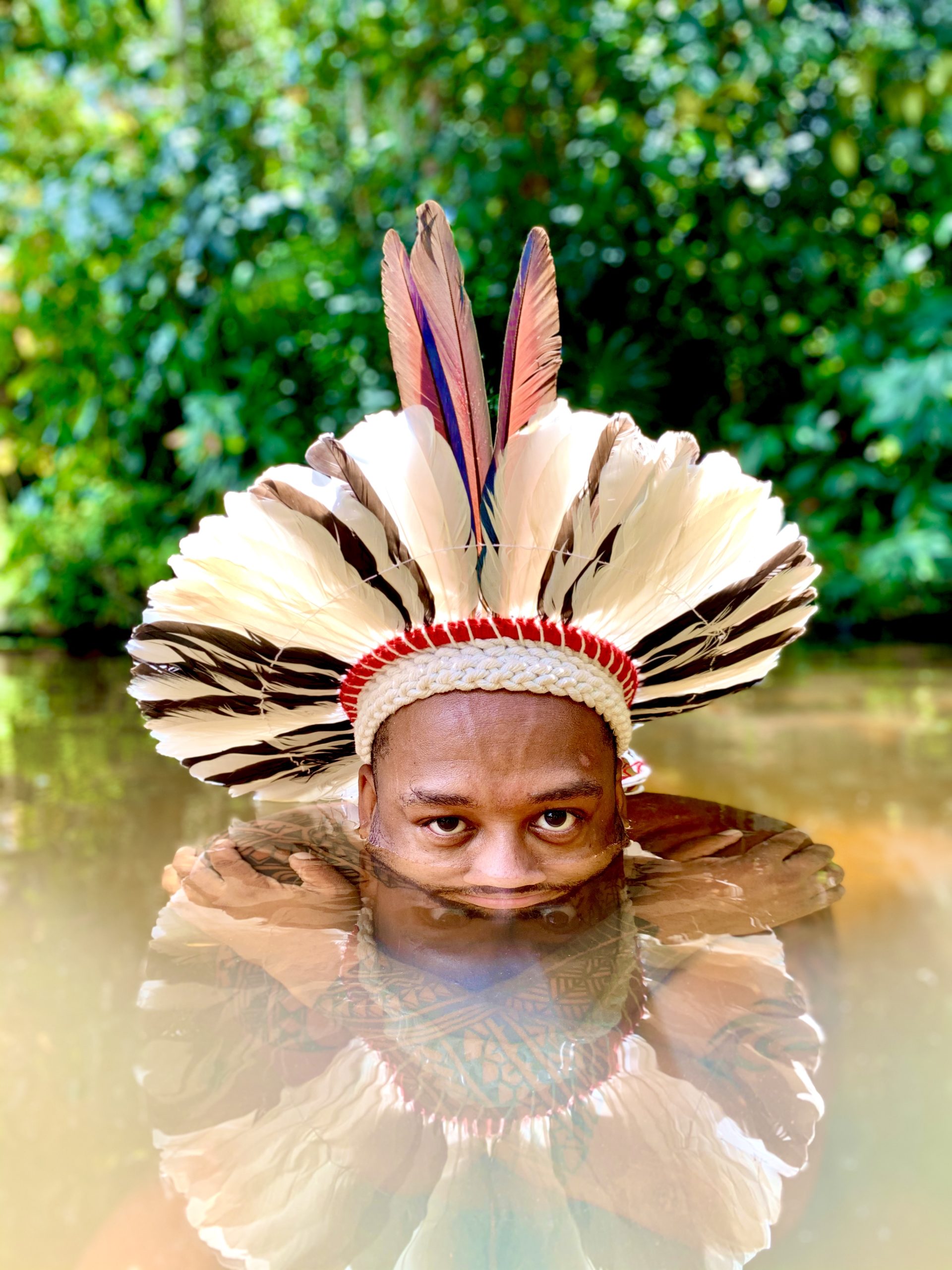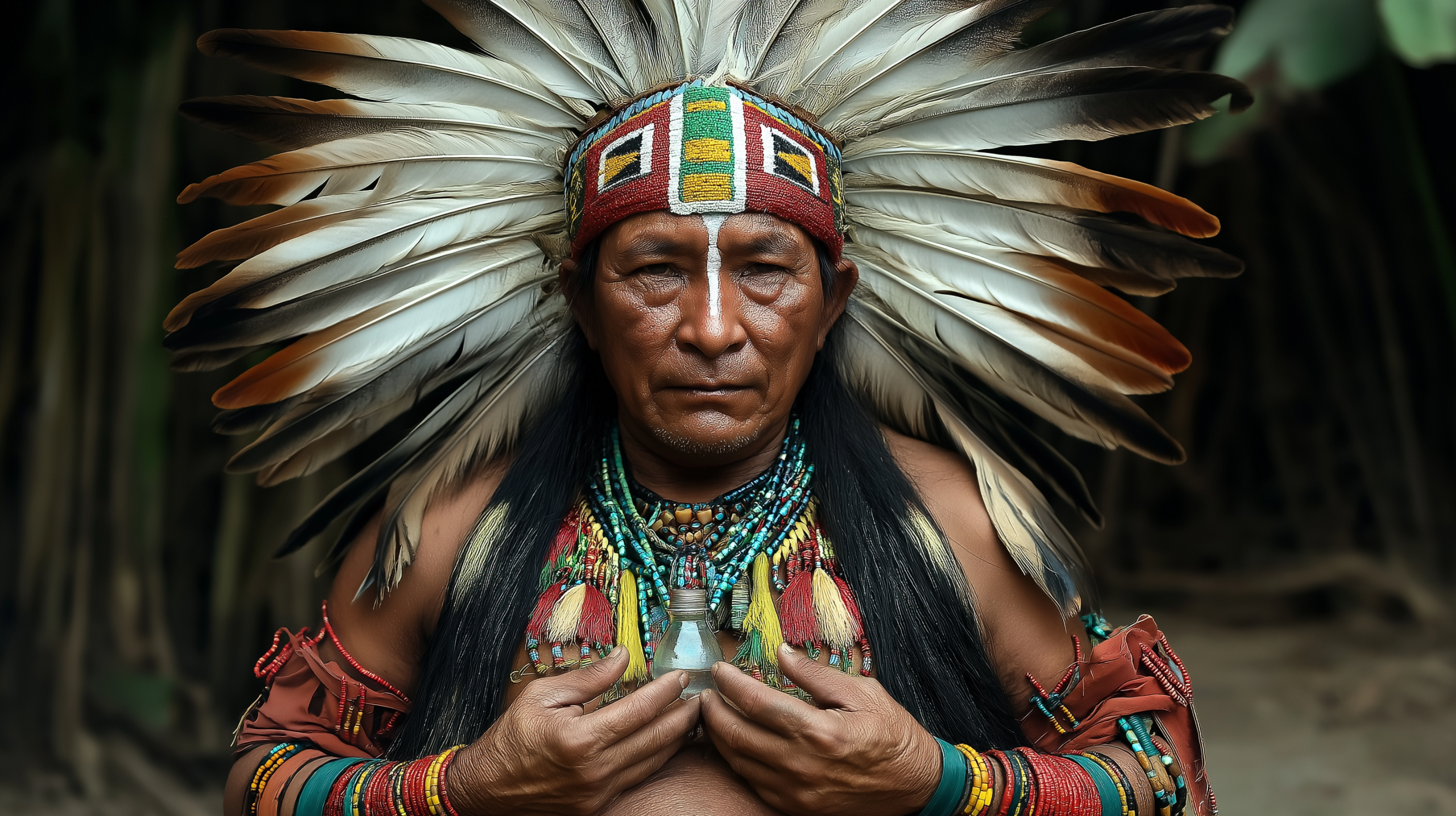Eye of the Beholder: Sananga Plant Medicine
 Years ago, during my first trip to Brazil, I participated in a fire circle with a Kariri Xocó shaman. During the ceremony, I was offered the plant medicine sananga.
Years ago, during my first trip to Brazil, I participated in a fire circle with a Kariri Xocó shaman. During the ceremony, I was offered the plant medicine sananga.
At the time, the shaman explained what it was, how it worked, and the benefits it provided. Without hesitation, I said—NO!
My initial thought was: I cannot play with my eyes. As a visual artist and creator, my eyesight was everything. I depended on it, just like everyone else. And so, my adventure with sananga ended before it even began.
Still, as I stood firm in my decision, I couldn’t help but be curious about the others in the circle who accepted the medicine. I observed a range of reactions—nothing extreme—but I remained at no.
As the evening came to a close and I noticed that no one had gone blind, I was still holding on to my no.
Years later, in a completely different setting, I found myself around the fire once again. This time, sananga was being offered during an ayahuasca ceremony. Unlike before, I came to this ceremony with a more open mind and an adventurous spirit. This time, I said yes.
The experience was exactly as I had read—an intense burning sensation, followed by clarity in my body, and then the profound visual effects that made me a believer.
In fact, I was so moved by the experience that I tried sananga twice in the same evening. From that moment on, I became a firm believer in its power.
This post is for anyone curious about Indigenous plant-based medicines or considering sananga as a tool for personal healing or spiritual growth.
Sananga: An Ancient Amazonian Medicine
Sananga is a traditional eye medicine derived from the roots and bark of plants belonging to the Tabernaemontana genus, primarily Tabernaemontana undulata and Tabernaemontana sananho. These plants belong to the Apocynaceae family and are rich in alkaloids with medicinal and psychoactive properties.
In Western botanical terminology, these plants are sometimes referred to as “milkwood” due to their milky latex when cut. Sananga is used by Indigenous tribes of the Amazon, particularly the Yawanawá, Kaxinawá (Huni Kuin), and Matsés, for both physical and spiritual healing. The medicine is highly regarded for its ability to sharpen vision, clear negative energies, and enhance perception.
The Plants Behind Sananga and Their Properties
The two primary plants used to create sananga, Tabernaemontana undulata and Tabernaemontana sananho, contain a range of alkaloids, including ibogaine, coronaridine, and voacangine. These compounds have been studied for their neurological effects, particularly in relation to neuroplasticity, pain relief, and mental clarity. Ibogaine, for example, has been explored in Western medicine for its potential in treating addiction and stimulating neurogenesis.
The roots and bark of these plants are carefully harvested, ground into a fine paste, and then macerated in water to extract their active compounds. The resulting liquid is filtered and stored as eye drops, which retain the plant’s medicinal properties.
The Cultural and Historical Significance of Sananga
 Sananga has been used for centuries by Indigenous tribes for multiple purposes, from improving hunting abilities to spiritual purification. Among the Yawanawá and Huni Kuin, the medicine is believed to clear “panema”, a term referring to negative energies, bad luck, or spiritual blockages that cause lethargy and misfortune.
Sananga has been used for centuries by Indigenous tribes for multiple purposes, from improving hunting abilities to spiritual purification. Among the Yawanawá and Huni Kuin, the medicine is believed to clear “panema”, a term referring to negative energies, bad luck, or spiritual blockages that cause lethargy and misfortune.
Hunters apply sananga to enhance their visual acuity and perception, allowing them to detect subtle movements in the dense Amazon rainforest. In shamanic traditions, sananga is often used in preparation for ayahuasca ceremonies, as it is believed to purify the body and mind, making the user more receptive to spiritual visions.
How Sananga is Administered
 Sananga is applied as eye drops, with the liquid placed directly onto the conjunctiva of each eye. The experience is known for its intense burning sensation, which lasts anywhere from a few seconds to several minutes.
Sananga is applied as eye drops, with the liquid placed directly onto the conjunctiva of each eye. The experience is known for its intense burning sensation, which lasts anywhere from a few seconds to several minutes.
This discomfort is a result of the alkaloids stimulating nerve endings in the eyes, triggering a temporary inflammatory response. Indigenous healers and practitioners emphasize that this burning is part of the healing process, working to clear energetic and physical blockages. After the initial discomfort fades, users often report a sense of clarity, calmness, and heightened visual perception.
Physical and Ophthalmological Benefits
One of the most widely reported benefits of sananga is its impact on vision and eye health. Users claim that it enhances night vision, contrast sensitivity, and overall clarity, making it valuable for hunters and those seeking improved eyesight. Some anecdotal reports suggest sananga may help with glaucoma, cataracts, and eye infections, though scientific studies are needed to confirm these claims.
Additionally, sananga has anti-inflammatory and analgesic properties, which may contribute to pain relief and reduced eye strain. Some alternative medicine practitioners believe sananga may support detoxification of the pineal gland, though this remains speculative.

Emotional and Psychological Effects
Sananga is also valued for its psychospiritual benefits, particularly in clearing emotional trauma and mental fog. Indigenous wisdom holds that sananga works on an energetic level, dissolving fear, anxiety, and negative thought patterns. Many users report experiencing emotional releases during or after application, often leading to greater mental clarity, focus, and emotional resilience. The medicine is sometimes used as part of deep healing work, especially in conjunction with other plant medicines such as ayahuasca and rapé (sacred tobacco snuff).
Synergy with Other Amazonian Medicines
Sananga is frequently used alongside other sacred Amazonian medicines. In ayahuasca ceremonies, it is administered beforehand to help cleanse the mind and prepare for deep introspection. It is also combined with rapé, which is believed to enhance focus and grounding. Some Indigenous traditions incorporate sananga in rituals aimed at spiritual protection and energy clearing, ensuring that participants enter altered states of consciousness with clarity and balance. This combination of medicines is thought to amplify the effects of each, creating a holistic approach to healing and transformation.
Ethical and Sustainability Considerations
As sananga’s popularity increases outside Indigenous communities, concerns about sustainable harvesting and cultural respect have emerged. Overharvesting of Tabernaemontana species could threaten their natural populations, making it essential to source sananga ethically from Indigenous cooperatives that practice sustainable cultivation.
Additionally, it is important to acknowledge and respect the cultural and spiritual origins of sananga, ensuring that its use remains aligned with the wisdom of the Indigenous peoples who have safeguarded this sacred medicine for generations.
In conclusion, sananga is more than just an eye medicine—it is a profound healing tool with deep physical, psychological, and spiritual significance. Whether used to enhance vision, clear negative energy, or support emotional healing, sananga remains a vital part of Amazonian Indigenous traditions. As interest in plant medicine continues to grow, it is essential to approach sananga with respect, mindfulness, and ethical responsibility.



I had used Sananga for months then i stopped. It definitely shifted my “sight” both within and outside. Perhaps this is a calling to return to communion with this medicine. Now to locate a new supplier. 🙏🏾